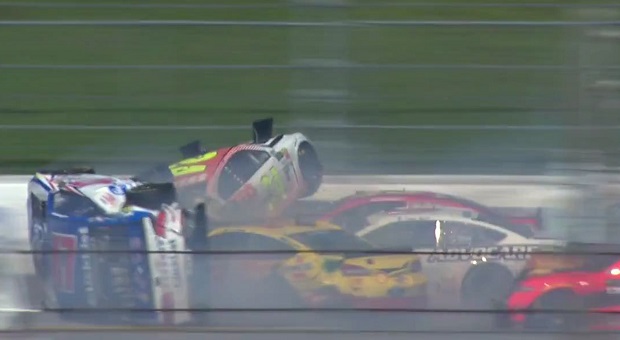

Did you watch yesterday’s Cup race at Talladega? If so, you witnessed another of what the pundits call “The Big One.” Being honest, it’s one of the things that draw huge crowds to both Talladega and Daytona – the big wreck that takes out almost half the field in spectacular fashion. Yesterday’s race didn’t disappoint.
Yesterday’s GEICO 400 was Relatively Caution-Free
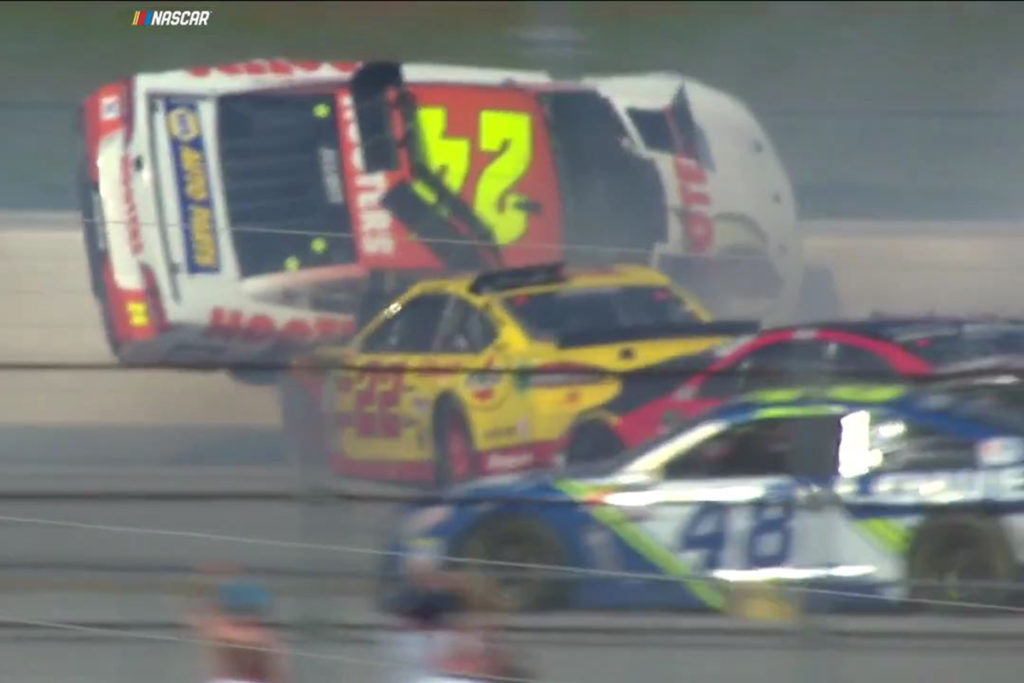
The race yesterday only had a few cautions, two 0f which were planned from the beginning of the season – the cautions after the first two stages. Although the new rules package includes the reduced-downforce aero package, there were only a few cautions for wrecks, only one of which included more than a few cars.
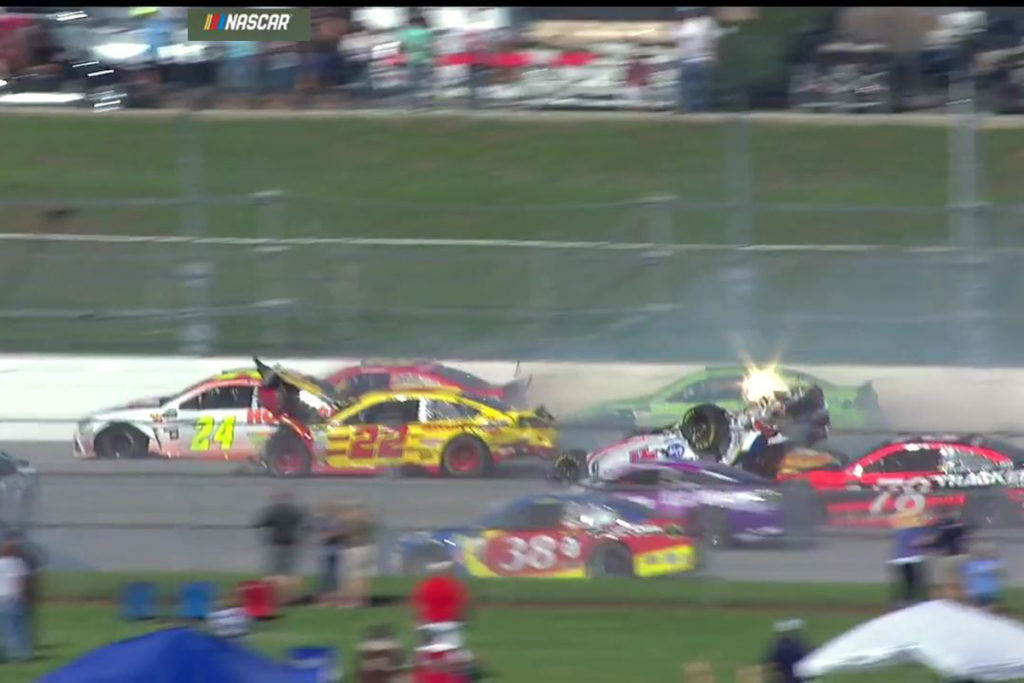
There were a few drivers who got a little loose due to “love taps” or an “aero-loose” condition and brushed the wall. Those are expected no matter what track they’re on. Yesterday’s big one was a wreck that caused damage to 16 of the remaining 34 cars that were on the lead lap when it happened.
Drafting is an Inherently Dangerous Game of Inches
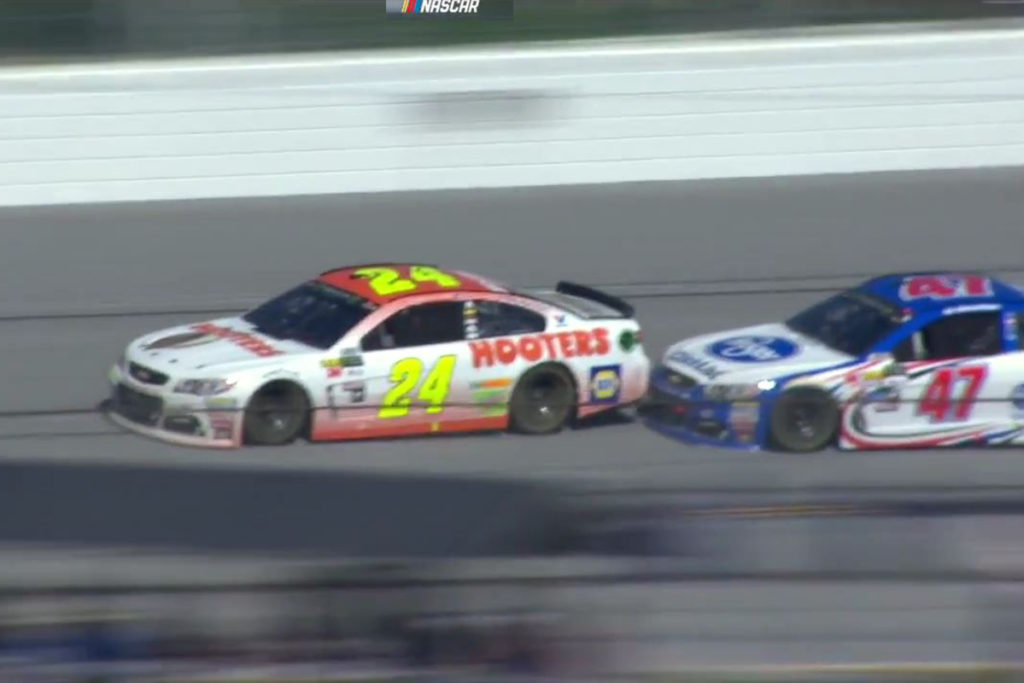
Drafting: You and I have probably done it on the highway in our personal cars more times than we can count. It’s a great way to save gas on longer trips. Yet to do it correctly (getting yourself inside the wake turbulence of the vehicle in front of you) is illegal because it’s dangerous. You have far less time to react if a driver in front of you has to “check up” in order to avoid the vehicle in front of them.
Yesterday’s race was proof positive that drafting is a game of inches – inches off the rear bumper of the driver in front of you, inches from the door of the car next to you and inches from the wall. All at 180 MPH plus.
More importantly, when you’re bump-drafting, you’ve got to be careful of where you are on the track and how your bumper lines up when you give the car in front of you a push. Yesterday’s race highlighted this perfectly. AJ Allmendinger gave Chase Elliot a small push that got him out of shape and then gave him a bit more of a push that turned him. “The Big One” ensued, a wreck that ended up with AJ sliding down the track for a couple of hundred yards on his driver door and top. It also had Chase’s car doing its imitation of a flying car.
Despite Severity of Wreck, Everybody Walked Away Unscathed
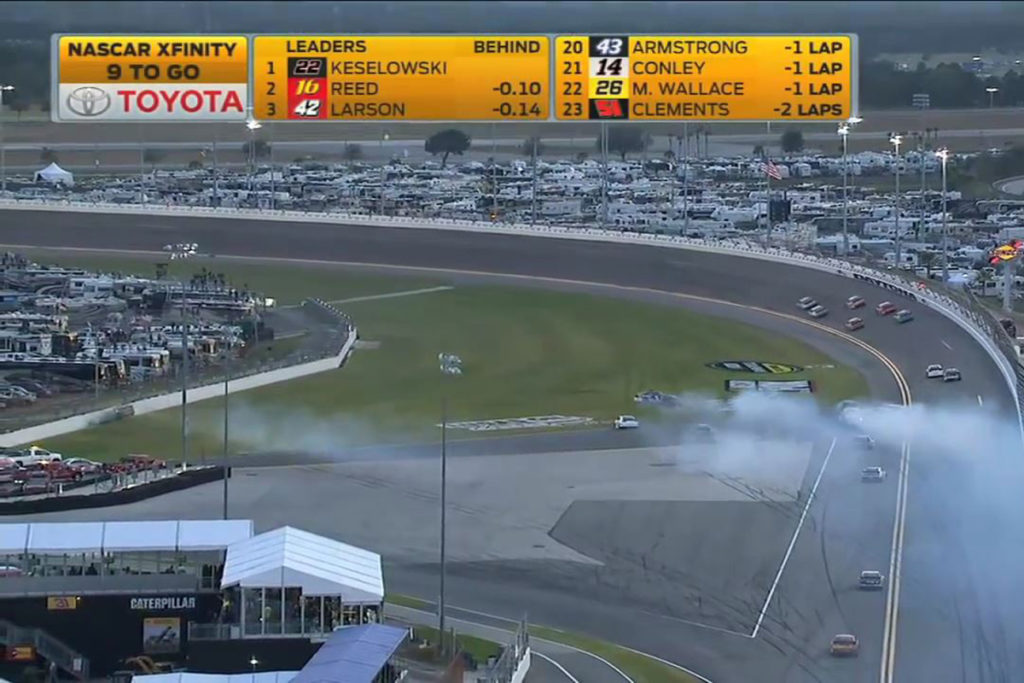
The wreck created total carnage on the track and brought out the red flag for more than 20 minutes while track safety workers cleaned up the mess. Danica Patrick hit a wall protuberance almost head-on, similar to Kyle Busch’s XFINITY crash in Daytona in 2015.
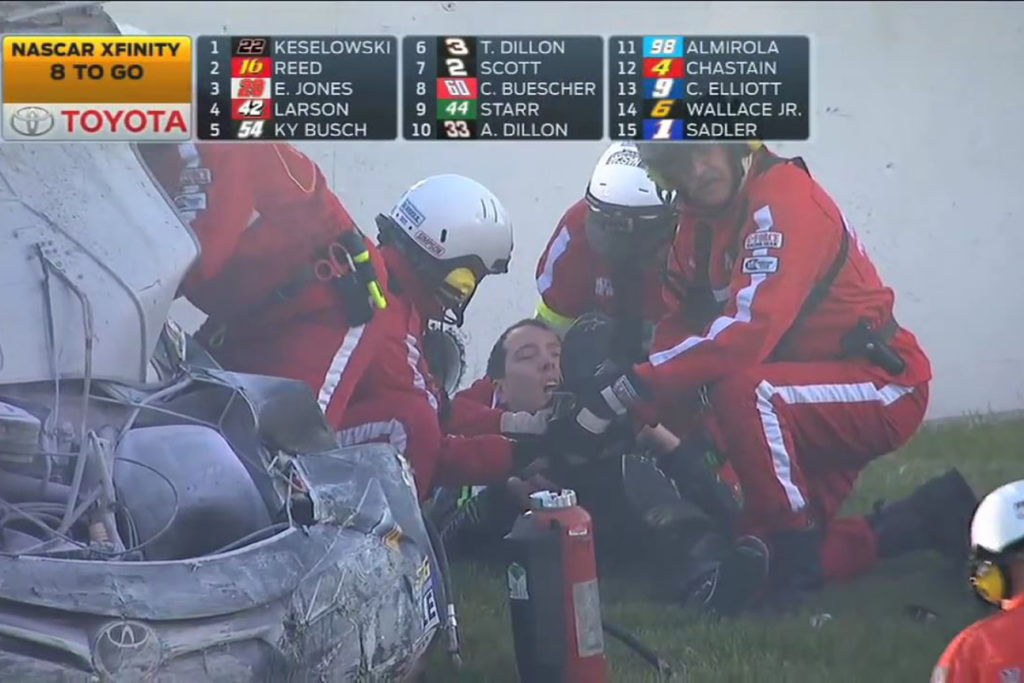
Luckily for Danica, she hit the SAFER Barrier instead of a solid wall the way Busch did and was able to give her boyfriend, race winner Ricky Stenhouse Jr., a big kiss in Victory Lane after the race. In fact, thanks to NASCAR’s safety innovations over the years, everyone walked away with nothing more than one driver complaining that he was limping because his heel was burned due to heat transmitted through the floorboards from the exhaust.
Last Year’s Rules Package Would Have Seen Drivers Injured in Wreck
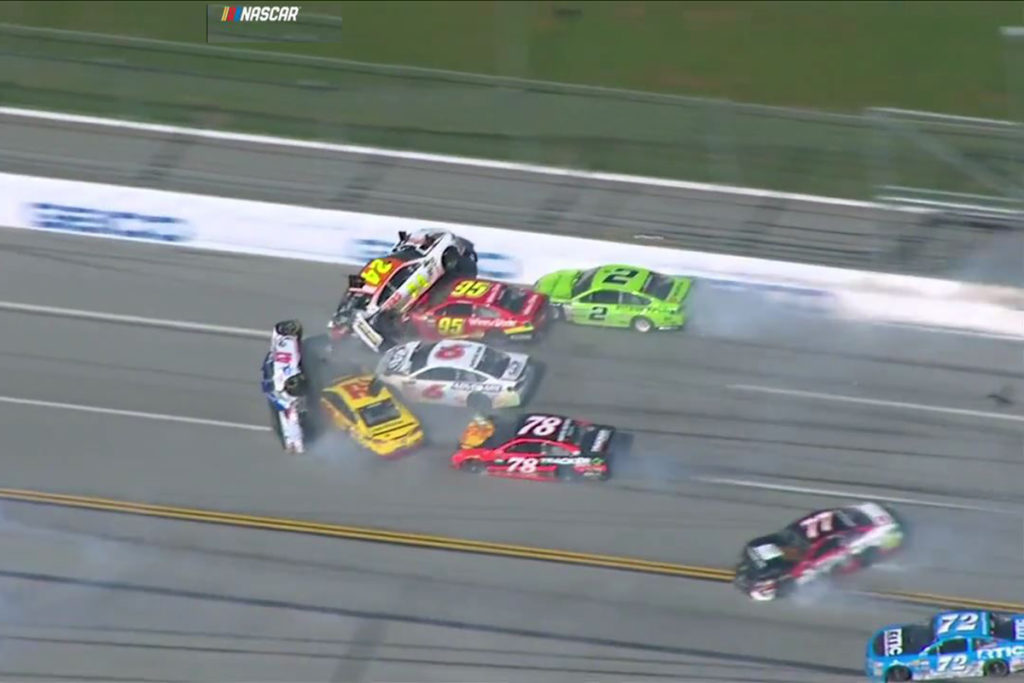
NASCAR introduced what they call “anti-intrusion panels” under the pedals at the two restrictor plate tracks as a requirement this year. Last year it was optional for the two summer races at the tracks. If the car builders for Danica’s number 10 hadn’t incorporated them into the car, she most likely wouldn’t have just walked away from her wreck.
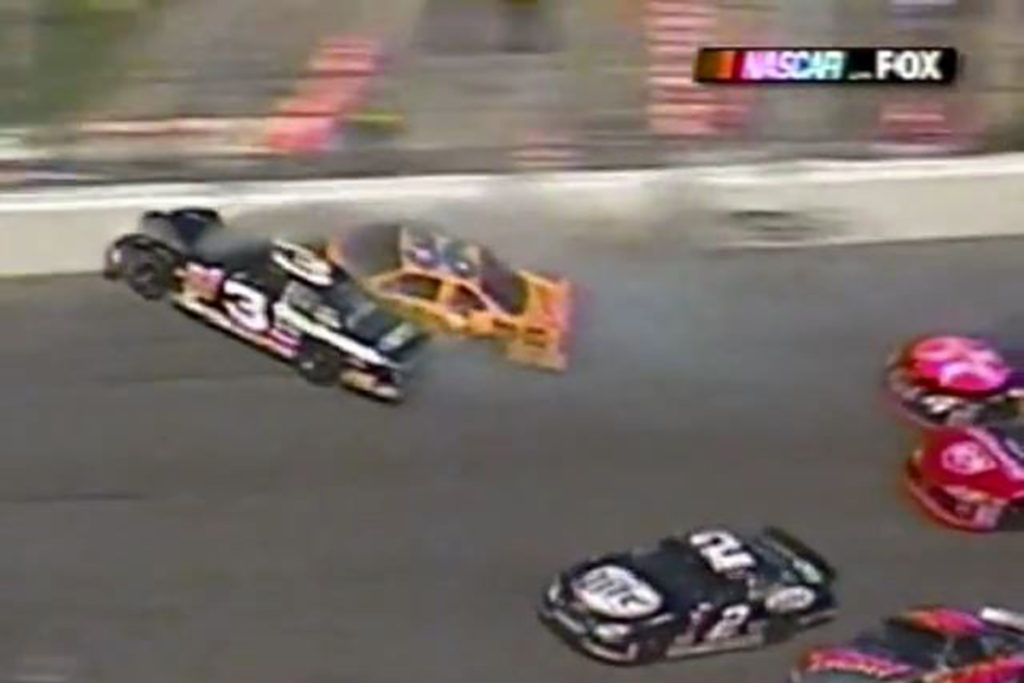
Chase Elliot would most likely have also suffered leg injuries from his wreck. Not only was Chase’s car pushed up into the air, he was hit by another drive nose to nose before he went flying. Joey Logano’s number 22 hit AJ’s car hard enough, from the looks of it, that the HANS (Head And Neck restraint System) device possibly saved his life as well.
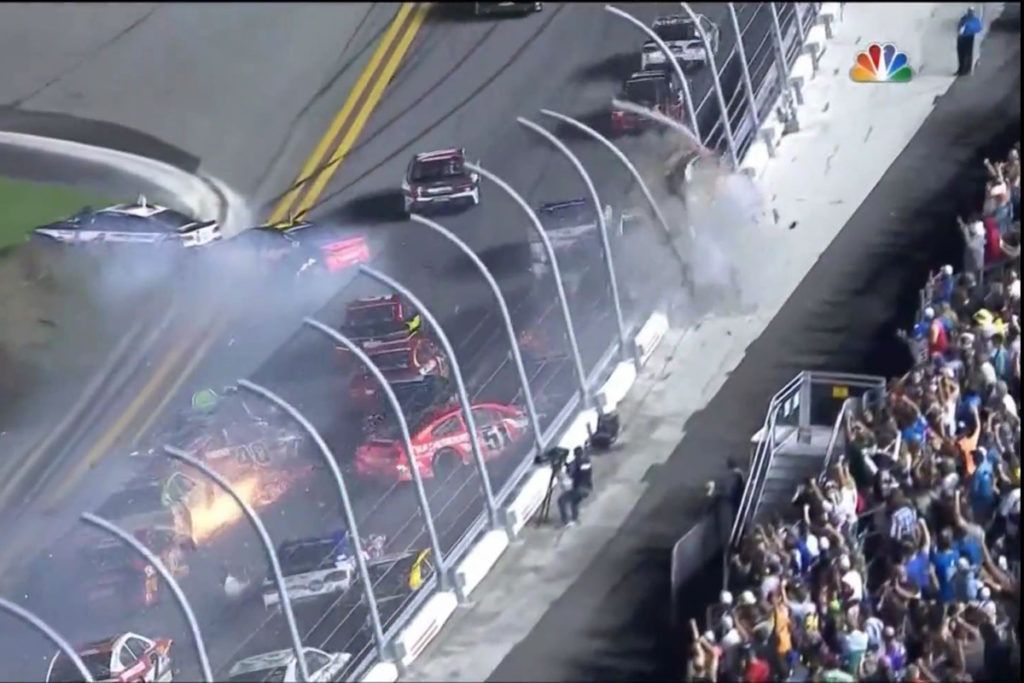
Remember, NASCAR mandated the HANS device for all drivers after the fatal wreck of Dale Earnhardt Sr. at the 2001 Daytona 500. Danica’s wreck, which arguably had more straight frontal impact energy than Senior’s, probably also would have, at best, seriously injured her neck and back were it not for the HANS device she was wearing.

Darrell Waltrip said it while they were analyzing the wreck yesterday during the red flag: “Mike (fellow announcer Mike Joy), my first race here, 1972, this is what I worried about. 19-….45 years ago and now here we are.” As long as they keep racing on tracks like Daytona and Talladega, and NASCAR continues to allow bump-drafting, we’re going to see wrecks like the one we had yesterday.

AJ and Chase could also very well have been killed if NASCAR hadn’t mandated those monstrous wrap-around extensions on the seats as well. You hear Waltrip and Joy saying it quite a bit: “He hit the wall, but he didn’t hit hard because he was already running up next to it when he hit it.”
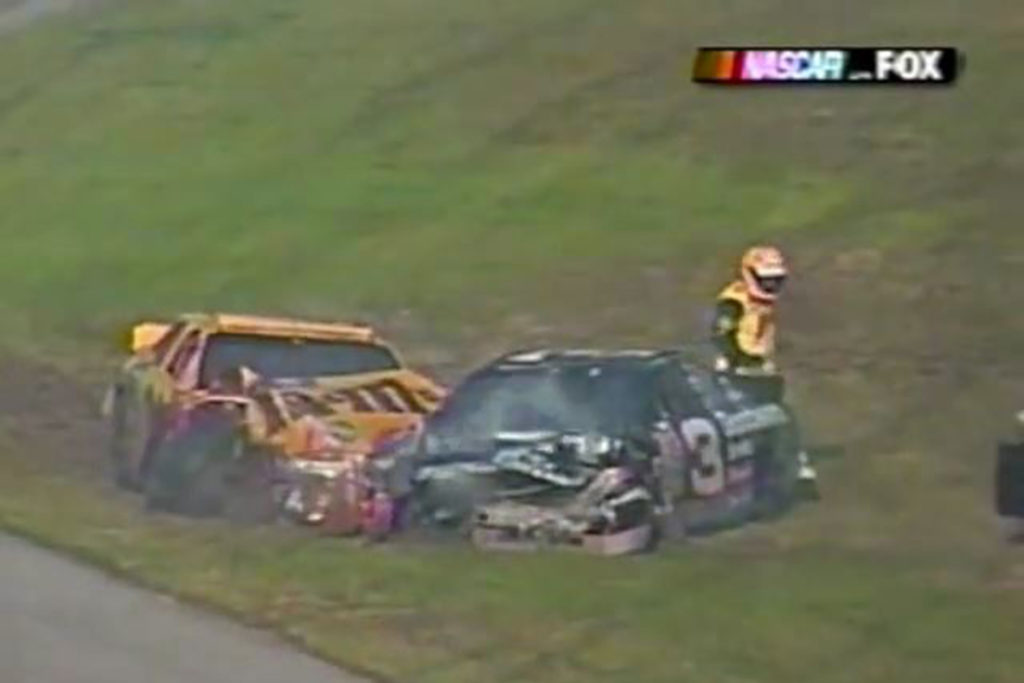
That’s basically the same principle behind the wrap-around head protection in the seats: Minimize the distance a driver’s head can travel laterally before it runs into an immovable object (the seat extension or the roll cage). I can say with a fair amount of certainty that yesterday’s wreck would have seen a number of ambulances leaving the track after the wreck to take drivers to local hospitals with severe blunt force trauma to the head. Did AJ and Chase walk away with headaches? I can almost guarantee they did, but they walked away, and that is thanks to the safety innovations NASCAR has made over the years.
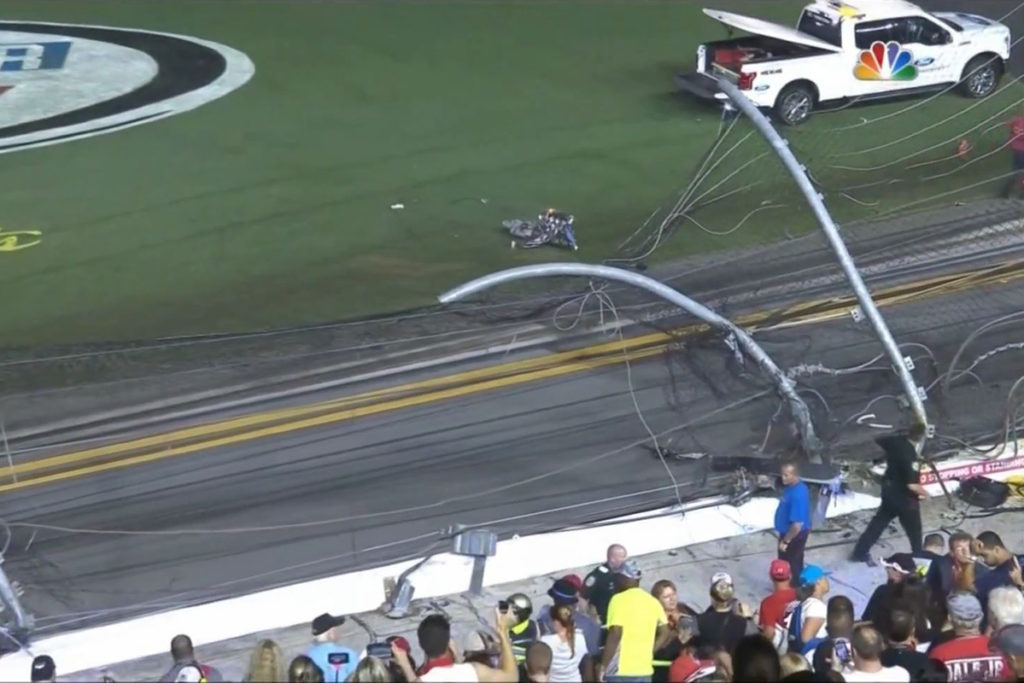
How do we end these big painful-looking wrecks? Easy – we end racing. That’s not going to happen, though. It is too much a part of our national psyche. Even those who aren’t adrenaline junkies are adrenaline junkies in secret. We love the excitement of the racing. And yes, we love to see the wrecks. Hopefully, we just don’t like to see the injuries that can be a part of these big wrecks. What about you – can you think of anything else (besides smaller restrictor plates and higher gears for lower speeds) that NASCAR can do to further reduce the risks drivers face every time they hop in a car and race all-out?


Leave a Reply